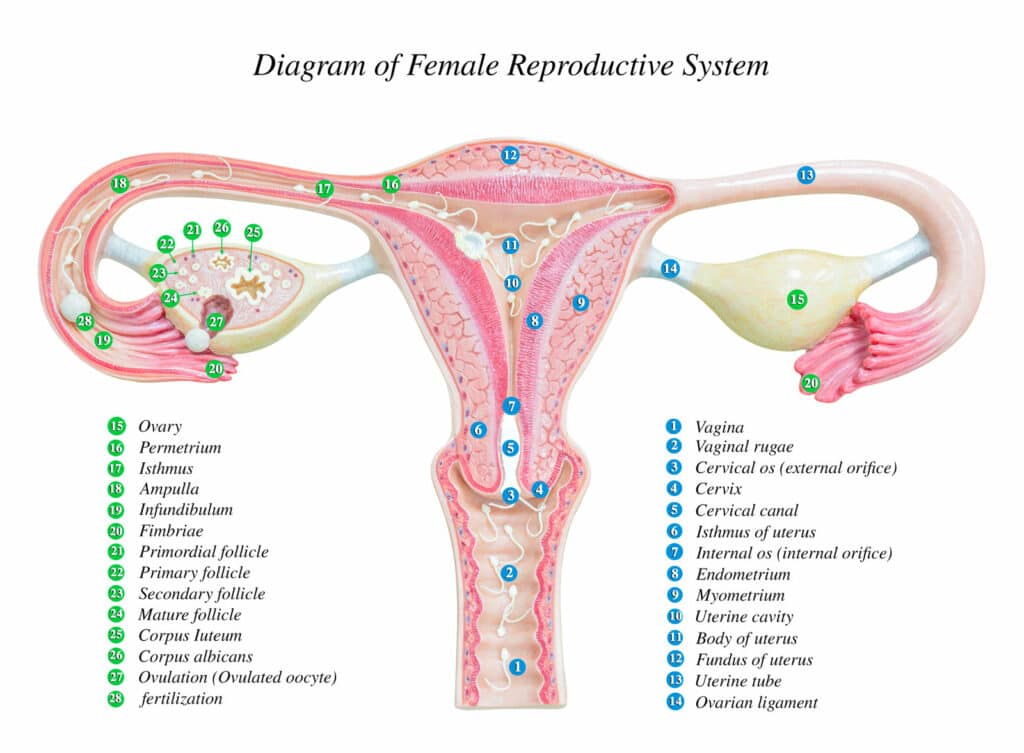Many patients ask if stress or a poor diet can cause infertility. Smoking is a known risk factor for decreased ovarian and tubal function, while marijuana has been shown to adversely affect sperm counts. Rather than focus on a specific diet, it is recommended to eat a well-balanced diet to maximize your chances of having a healthy pregnancy. It is best to exercise and maintain ideal body weight, and drink caffeine in moderation. While it is ideal to decrease stress, there is little evidence that infertility is caused by stress.
The time to start a fertility evaluation is:
- If you have been trying for pregnancy for 1 year
- If you are over age 35 and have been trying for pregnancy for 6 months
- If you have a known cause of possible infertility (for example, if you have irregular menstrual cycles, blocked tubes, endometriosis, or a low sperm count).
Female Reproductive System
The main female reproductive organs are the uterus, ovaries, fallopian tubes, and vagina. The uterus, a hollow muscular organ about 3 inches long located deep inside the pelvic cavity is home to the developing fetus. The neck of the uterus (cervix) projects into the vagina, a muscular tube about 4 inches long that receives the penis and sperm and serves as the birth canal.

The fallopian tubes, a pair of structures each about 4 inches long, join the uterus near the top. Their flared ends lie near the ovaries, paired almond-shaped glands that produce ova (eggs) and female hormones. After an ovum is expelled into the pelvic cavity, it passes through a fallopian tube into the uterus. If the egg has been fertilized by a sperm, it implants in the uterus and gestation begins.
Phases of the Menstrual Cycle
The menstrual cycle prepares the ovaries for ovulation and the endometrium (uterine lining) for implantation of the fertilized egg (ovum).

Follicular Development
Every 28 days or so, new follicles (clusters of cells that each enclose a developing egg) begin to grow inside the ovaries. Usually just one follicle fully matures and ovulates. The empty follicle becomes the corpus luteum, which secretes large quantities of progesterone and estrogen. It soon degenerates, hormonal secretion declines sharply, and menstruation starts.
Endometrial Development
Here are the phases and the activities during endometrial development:
- Menstruation – The outer layers of the endometrium slough off.
- Postmenstrual phase – Endometrial cells proliferate and the lining thickens.
- Midcycle – An egg is expelled from the ovary (ovulation) into the pelvic cavity.
- Premenstrual phase – The endometrium continues to mature until a sudden drop in hormone levels triggers menstruation.





